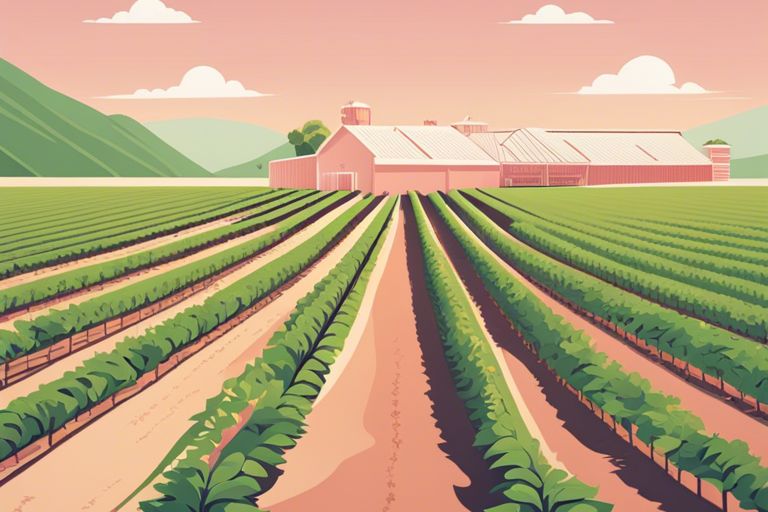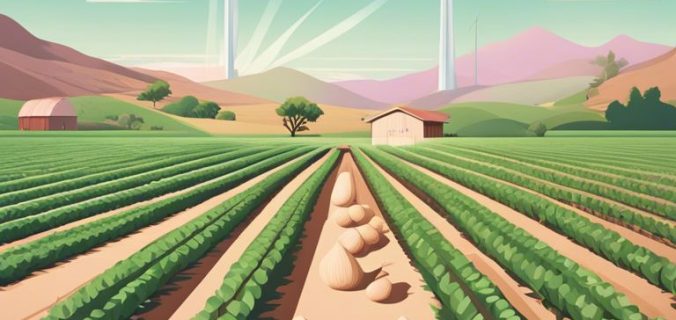Water-saving practices are crucial in sustainable almond farming. In this comprehensive guide, we will explore key methods for growing vegan almonds without compromising water resources. By implementing innovative techniques and utilizing efficient irrigation systems, you can significantly reduce water consumption and minimize environmental impact. Learn how to cultivate delicious vegan almonds while protecting precious water sources for a more sustainable future.
Key Takeaways:
- Dry farming: Utilizing dry farming techniques can significantly reduce water usage in almond production.
- Regenerative agriculture: Incorporating regenerative farming practices can improve soil health and water retention, leading to more sustainable almond production.
- Drip irrigation: Implementing drip irrigation systems can help deliver water directly to the roots of almond trees, reducing water waste.
Understanding the Importance of Water-Saving Practices
Factors Affecting Water Consumption in Almond Farming
Before delving into water-saving practices, it’s crucial to understand the factors that affect water consumption in almond farming. Climate, irrigation methods, soil type, and tree age all play a role in determining how much water an almond orchard will need. Knowing these factors can help farmers make informed decisions about water usage.
- Climate: The amount of rainfall and temperature in the region directly impact water requirements.
- Irrigation methods: Drip irrigation is more efficient than flood irrigation.
- Soil type: Sandy soils drain faster, requiring more frequent watering.
- Tree age: Younger trees need more water to establish their root systems.
Knowing these factors can help farmers implement water-saving practices effectively.
The Environmental Impact of Traditional Almond Farming
Little attention is often given to the environmental impact of traditional almond farming. Traditional almond farming practices can have detrimental effects on local ecosystems and water resources. The extensive use of water in almond farming depletes local water sources, leading to water scarcity in drought-prone regions. In addition, the application of pesticides and fertilizers can pollute soil and water, harming wildlife and aquatic ecosystems.

Preparing Your Land for Sustainable Almond Farming
Tips for Soil Conservation and Preparation
Any successful almond orchard starts with proper soil conservation and preparation. Begin by assessing your soil quality and making necessary amendments to ensure optimal conditions for almond trees. Incorporate cover crops to enhance soil structure and reduce erosion. Utilize compost and organic matter to improve soil fertility and promote beneficial microbial activity. Recognizing the importance of soil health is key to long-term sustainability of your almond farm.
How to Implement Efficient Irrigation Systems
Preparation for sustainable almond farming includes implementing efficient irrigation systems to maximize water use. The key is to minimize water waste and ensure that trees receive adequate moisture without excess. Consider drip irrigation or micro-sprinklers for targeted watering directly to the roots. The use of smart irrigation technology can help monitor soil moisture levels and adjust watering schedules accordingly. Recognizing the importance of water conservation is crucial for sustainable almond farming.
Water-Saving Techniques for Vegan Almond Farming
How to Use Drought-Tolerant Varieties and Crop Rotation
Crop rotation is a key strategy in sustainable almond farming. By alternating almond crops with other drought-tolerant plants such as legumes or grains, soil health is maintained, pests are naturally managed, and the water needs of each crop are reduced. Choosing drought-tolerant almond varieties can further decrease water consumption, ensuring a more sustainable farming practice.
Factors to Consider for Mulching and Cover Cropping
You can enhance water retention in almond orchards through mulching and cover cropping. By adding a protective layer of mulch around the almond trees, moisture is preserved, reducing the frequency of irrigation. Cover crops such as legumes and clover can also help in retaining soil moisture and preventing erosion. Perceiving the benefits of mulching and cover cropping can lead to significant water savings in almond farming.
This method of sustainability provides numerous advantages for the almond orchard. Implementing mulching and cover cropping practices effectively retains moisture in the soil, reducing irrigation needs and promoting healthier plant growth. Perceiving the positive impact of these techniques on water conservation is crucial in maintaining a sustainable almond farming system.
Implementing Sustainable Water Management Practices
How to Monitor and Control Water Usage
Sustainable water management practices involve monitoring and controlling water usage to ensure efficient utilization. By regularly checking water meters, conducting leak inspections, and implementing Almanac guidelines, almond growers can identify areas for improvement and take necessary steps to reduce water wastage.
Tips for Rainwater Harvesting and Grey Water Reuse
Management of rainwater harvesting and grey water reuse are important strategies to supplement almond irrigation sustainably. Implementing systems to capture rainwater and treat grey water for agricultural use can significantly reduce reliance on conventional water sources. Additionally, utilizing drip irrigation systems can further optimize water distribution and minimize runoff.
- Install rain barrels to collect rainwater.
- Implement greywater recycling systems for irrigation purposes.
After implementing these practices, almond growers can efficiently utilize alternative water sources while conserving precious freshwater for other critical needs.
Summing up
As a reminder, sustainable almond farming practices are crucial in conserving water resources and reducing environmental impact. This guide on growing vegan almonds sustainably highlights the importance of water-saving techniques like drip irrigation and mulching. By adopting these practices, almond farmers can not only minimize water usage but also promote the long-term health and sustainability of almond orchards.
FAQ
Q: What are some water-saving practices for growing vegan almonds sustainably?
A: Some water-saving practices for growing vegan almonds sustainably include implementing drip irrigation systems, using mulch to retain soil moisture, practicing dry farming techniques, and utilizing soil moisture sensors to optimize irrigation.
Q: How can drip irrigation systems help save water when growing vegan almonds?
A: Drip irrigation systems deliver water directly to the roots of plants, reducing water waste from evaporation or runoff. This targeted approach ensures that plants receive the right amount of water they need, leading to water savings and healthier almond trees.
Q: What is dry farming and how can it be beneficial for sustainable almond growing?
A: Dry farming is a water-saving technique that relies on natural precipitation to grow crops without supplemental irrigation. By promoting deep root growth and water retention in the soil, dry farming can help almond trees become more drought-resistant and sustainable in the long run.


Pingback: Is Yardley Soap Vegan, Cruelty-Free, and Ethical to Use? Check Here!